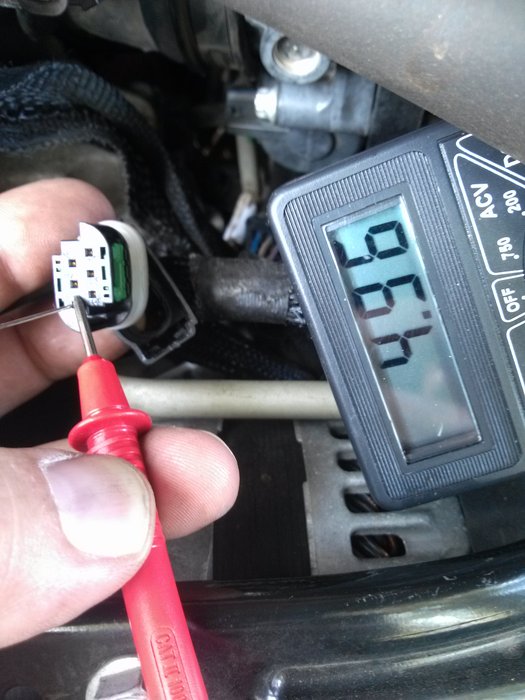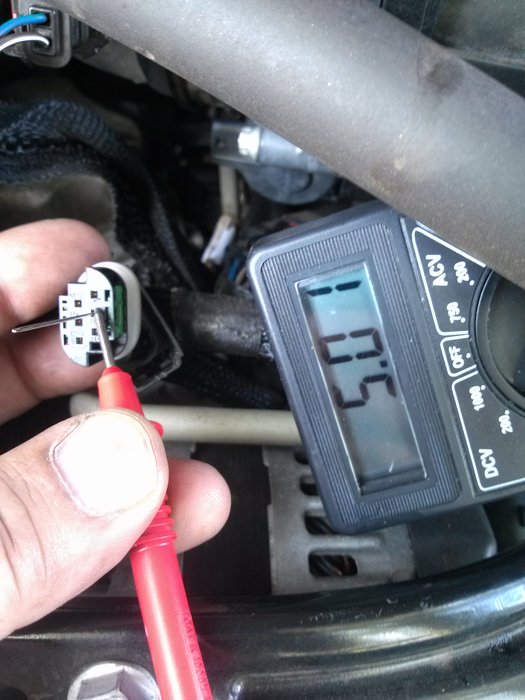Allow me to interject a couple of notes. Chrysler has never used a mass air flow sensor. What you might have is a throttle-by-wire system and you're disconnecting the throttle body.
Second, the voltage readings are irrelevant when you measure them with the plug disconnected. That creates an open circuit. The position sensing part of the circuit has mechanical stops that prevent the signal voltage from going beyond, (approximately), 0.5 to 4.5 volts. This type of circuit will always have a "pull-up" resistor or a "pull-down" resistor in the computer to force the voltage to go to an unacceptable level when there's an open circuit. That's one of the ways it knows to set a diagnostic fault code. Without those resistors, when you unplug a sensor it is possible for that signal voltage to "float" to some random value from being connected to all the other circuitry, and if that random value is between 0.5 and 4.5 volts, the computer will accept it and try to run on it. You need to carefully back-probe the terminals through the rubber seal and take the voltage readings with that plug connected.
When you unplug the throttle position sensor, the signal voltage is going to go to 5.0 volts. That's where you're getting the fault code from. Most scanners read voltage, not percent, but that's irrelevant. Code 113 is related to the intake air temperature sensor unless they have changed with the new "CAN Buss" system.
P0113 � Intake Air Temperature Circuit High Input
High voltage again means that sensor was disconnected.
P0123 � Throttle/Pedal Position Sensor/Switch A Circuit High Input
That is also caused by unplugging the connector while the ignition switch is on.
How are you determining the oxygen sensors are quitting? Two of them yet. In the absence of fault codes, you would need a scanner to view live data to see what they are reporting. Which warning lights were turning on? If you have multiple lights, that suggests low system voltage from a charging system problem. Of course it could be from disconnecting things too while the ignition switch is on.
Based on your observations that the problem started shortly after replacing the spark plugs, I'd start there by double-checking the gap, heat range, and proper seating of the plug wires. Some people say certain brands of spark plugs don't hold up in certain engines. I've read a lot of solutions that involved fancy plugs like split-fire types and things like that. If the engine didn't come with them, they seem to cause some problems. I've had plug wires on my cars in the past that I didn't seat properly and they arced and burned away until a misfire resulted.
Friday, October 12th, 2012 AT 7:42 PM





